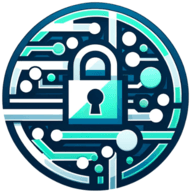What Are Recommended Risk Management Strategies for Blockchain Implementation?
To navigate the intricate landscape of blockchain implementation, we've gathered insights starting with an Attorney's perspective on the paramount importance of legal and regulatory compliance. From implementing robust key management to deploying real-time monitoring systems, explore these essential risk management strategies.
- Ensure Legal and Regulatory Compliance
- Implement Robust Key Management
- Utilize Multi-Signature Transactions
- Regularly Audit Smart Contract Code
- Establish Network Access Controls
- Deploy Real-Time Monitoring Systems
Ensure Legal and Regulatory Compliance
When implementing blockchain technology, it's crucial to manage legal and regulatory risks. Ensuring compliance with relevant laws, which can vary by jurisdiction, is essential. My expertise in securities regulation helps navigate these complexities. For example, determining if tokens qualify as securities under the Howey test can prevent regulatory issues. I've analyzed fungible gaming tokens, highlighting the importance of designing tokens for functionality, not investment.
Data privacy and security are also critical. Blockchain projects must comply with laws like the GDPR and the CCPA. With extensive experience working with national and international clients, I ensure robust compliance strategies across various regions.
Regular audits of smart contracts and blockchain codes are necessary to maintain technical integrity and security. My background in overseeing major transactions helps me manage these evaluations effectively.
Staying informed about legislative changes, like the No Section 230 Immunity for AI Act, is vital for adapting compliance strategies. As a thought leader in digital assets and securities regulation, I provide up-to-date guidance on these evolving issues.

Implement Robust Key Management
A pivotal step in securing a blockchain infrastructure is to ensure the implementation of robust cryptographic key management policies. This involves setting up protocols for generating, distributing, using, storing, and recovering keys. Adequate key management prevents unauthorized access and maintains the integrity of the blockchain.
Mismanagement of these keys can lead to irrecoverable loss of data or assets. It's crucial for organizations to prioritize this aspect of security. Ensure your organization adopts stringent key management policies.
Utilize Multi-Signature Transactions
To bolster blockchain security and accountability, utilization of multi-signature transactions is highly recommended. This security measure requires multiple parties to sign off on a transaction before it can be executed, reducing the risk of fraud or misuse. It adds an essential layer of checks and balances that is particularly beneficial for organizations handling sensitive transactions.
Multi-signature transactions help distribute authority and minimize the risk of a single point of failure. Integrate multi-signature protocols into your blockchain transactions to ensure operational security and accountability.
Regularly Audit Smart Contract Code
It is essential to regularly update and audit the smart contract code that operates on the blockchain. This practice helps to identify and rectify vulnerabilities, thereby preventing possible exploits or bugs in the system. Regular audits and updates ensure the smart contracts remain secure and function as intended, upholding the trustworthiness of the blockchain.
Neglecting this can lead to significant security risks and financial loss. Begin scheduling regular audits and updates of your smart contract codes today.
Establish Network Access Controls
Establishing comprehensive network access controls forms the bedrock of a secure blockchain strategy. By meticulously regulating who can view or add to the ledger, organizations can substantially reduce the risk of unauthorized access and tampering. This involves verifying identities, setting user permissions, and monitoring access patterns.
Such controls are imperative for maintaining the security of sensitive data within the blockchain. Take action to implement stringent network access controls across your blockchain networks.
Deploy Real-Time Monitoring Systems
Deploying real-time transaction monitoring systems offers an immediate insight into potentially fraudulent or anomalous activities within the blockchain network. This strategy allows for the prompt detection and response to irregular transactions, which is crucial in mitigating risks. It serves as a continuous oversight mechanism to safeguard against internal and external threats.
By monitoring transactions in real time, you can quickly address risks and protect your assets. It's time to put a real-time monitoring system in place to oversee your blockchain transactions.

